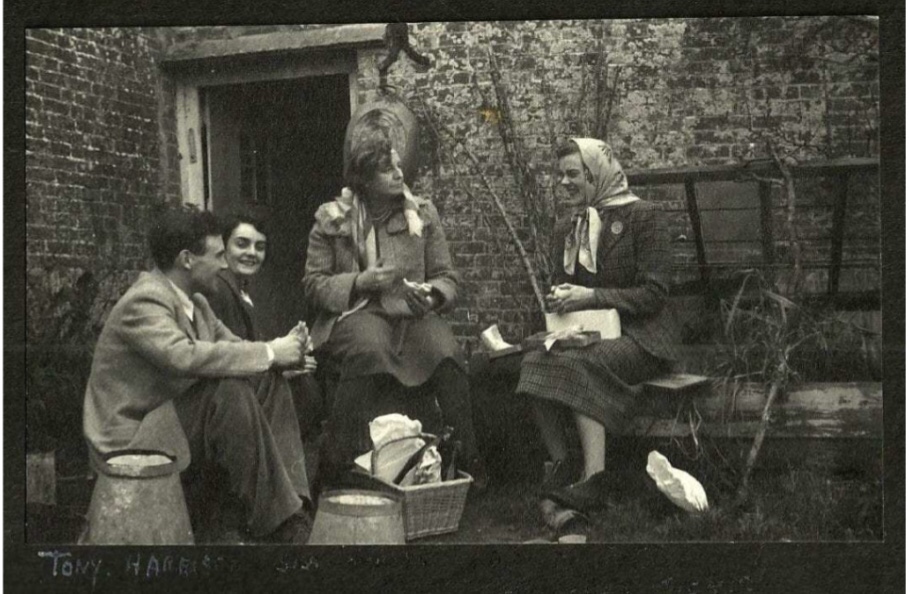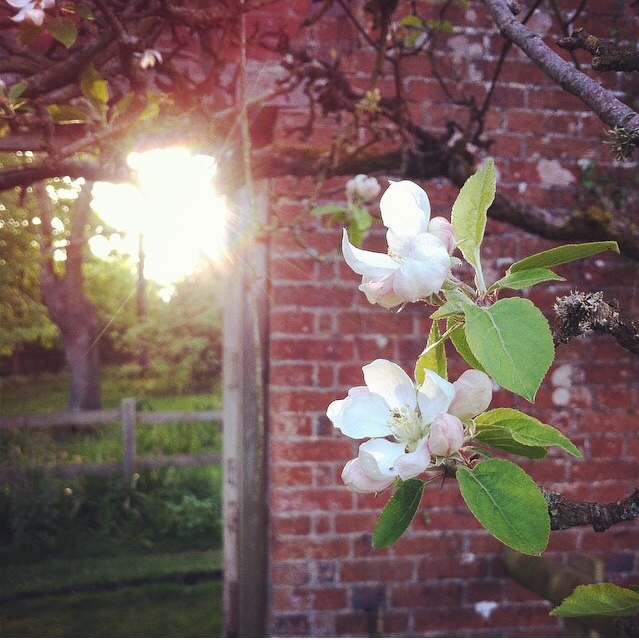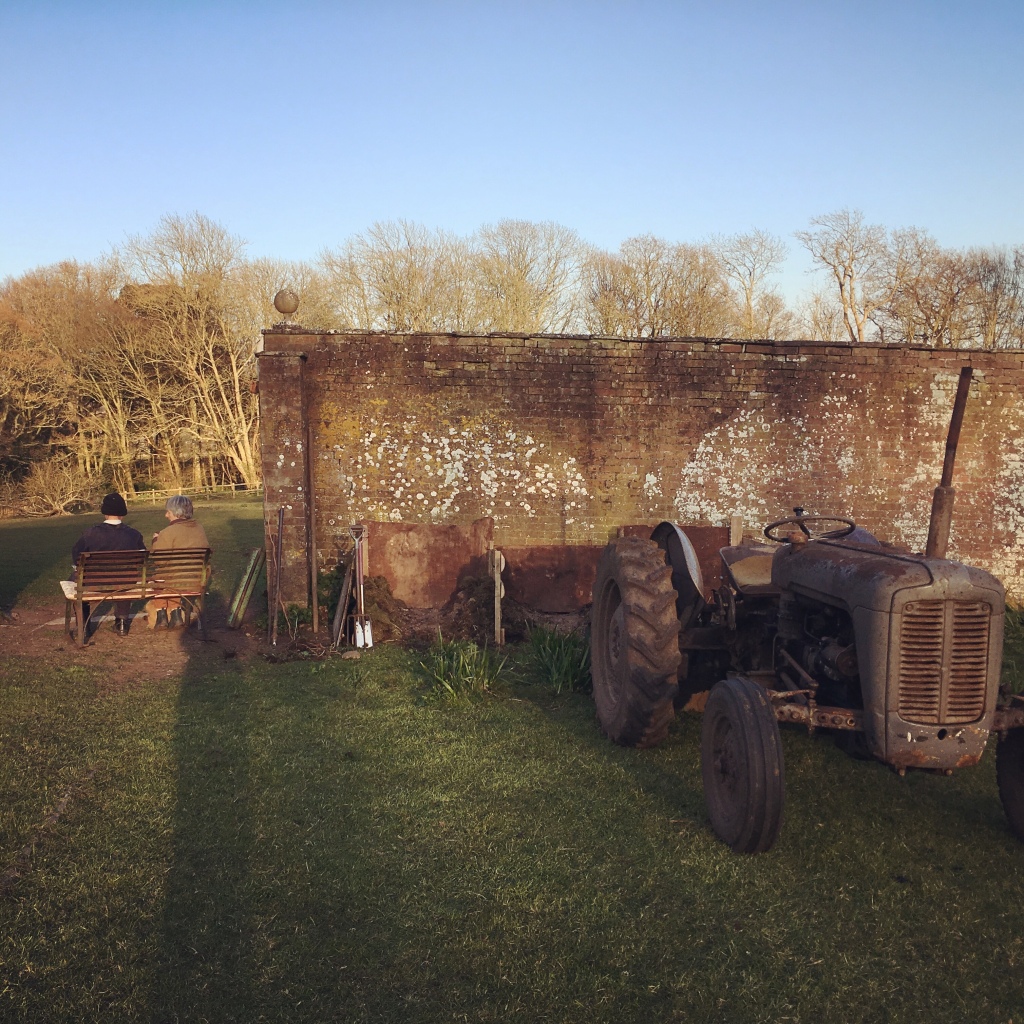I’m sawing through old planks of wood, building compost bays as part of my effort to dig for victory in this battle against food shortages amidst a global pandemic of coronavirus. (What a context…) At the start of this year, I was a couple of days into a journey that would take me through Europe, across the Atlantic and around the Caribbean. I had only the vaguest of plans, and the whole world open to me. I had no idea where I would end up, who I would meet or the experiences I would gain. I was, however, fairly certain I wouldn’t be building compost bays in the walled garden back at home by the end of March.
But here I am, and I notice my great-grandfather’s writing on one of the planks. CUT KNOT it says, in capital letters. I have taken many parts of my blessed childhood and adult life for granted, I am realising, and one of those things is that I recognise my great-grandfather’s handwriting. Don’t ask me how. I just always have. Just as I have always known my parents’ handwriting, and indeed my own.
My great-grandfather, John Dymond, died before my mum knew she was pregnant with me, but his life and choices have influenced mine in so many ways that it seems strange to me to realise that we never met. Of course, it’s not just his influence that has shaped me; it was with my great-grandmother (Gran) that he bought the house and land where I’m working now back in 1952. Of equal significance, my grandmother (Granny) who moved here with my Dad when he left school, and of course my parents, who made this their home nearly 40 years ago.
…
As I push the wheelbarrow out through the garden door, I notice the buds showing on the apple tree growing against the wall. I ate my first whole apple off that tree as a toddler. The fruit are small, bright red with pink flesh and are sweet and juicy. When Dad gave it a brutal pruning with a chainsaw a few years ago, Mum and I grieved for a tree that we feared might be lost forever. But our faithful tree sprouted from the two bare trunks, and now stretches above the wall behind it once more. The old branches used to hang over the door frame. Opening the door in late spring, you’d be met with a face full of blossom. In late summer and autumn, we duck low beneath the branches hanging heavy with fruit.
…
When I was born, this whole acre of walled garden was cultivated by Granny. She had endless asparagus, rose arches, fruit bushes, potatoes… One of my earliest memories is sheltering from the rain under a giant rhubarb leaf while she worked. She kept a butter knife ready to harvest her produce. As I pass through the door, I see her knife still wedged in the doorframe, rusty with nearly 30 years of no use.
For an acre is too much for one person to cultivate alone, especially someone as busy as my Granny, and not long after my memory of sheltering beneath the rhubarb, she left the garden to go fallow and let her ponies in to graze it.
Ivy grew up the walls. Ash, sycamore and elder trees grew around the edges and along the fence line in the middle.
As a teenager, I helped Granny feed and look after her ponies. She kept her stallion, Windy, in the walled garden with his mares. In winter, the ground became thick with mud. I’d climb over the gate into a bog almost reaching the top of my wellies, hefting a bale of hay whilst the ponies pushed behind me, eager to be fed.
The gate was tied shut with a loop of plaited baler twine. Never one to waste precious resources, Granny would cut open a bale of hay as close to the knots as possible so as to preserve the maximum length of twine, which she strung up over a beam in the hay barn. She taught me to plait using baler twine, sitting at the top of the path outside her garden one spring morning. She would plait it into halters for the ponies, knot it into hay nets, and use it to secure gates and fences. As I shovel woodchip into the wheelbarrow from the floor of the old woodshed to add to my compost heap, I notice a piece of plaited baler twine, left long after the railing it held up has been chopped for firewood.
…
By the time I was studying for my GCSEs, Windy the stallion had gone and the garden was green rather than muddy. I would walk up here with a pair of secateurs and a folding saw in my pocket, taking breaks from revision to clear hidden corners of my own Secret Garden. I cut brambles into foot long sections the way Granny had taught me, making them easier to rake up onto a bonfire, and sawed through mats of ivy as thick as tree trunks growing up the walls. I went back to school with scratches up my arms and legs.
I tip the woodchip from the wheelbarrow into the compost bays, and see the imprint of one of the old ivy ‘trees’ against the wall behind, bare brick where the lichen has yet to colonise. The walls are bare now, and the scrub and brambles all cleared, but for a moment I am back in my shady refuge, saw in hand and brambles all around me.
…
I left home a couple of years later, to study and then to work abroad. The ponies left too, Granny no longer able to care for them herself. A small flock of sheep arrived to graze in their place.
I moved back home for a month in the middle of my Masters degree. My boyfriend was training for a few weeks at a camp down the road, and it was one of the very rare opportunities that we had to live together. When he returned from work in the late afternoon, I’d leave my computer and research and we’d head to the walled garden together, felling trees, feeding ivy from the walls to Nettle the sheep, and burning bonfires late into the evening. Sometimes as I work, I get a whiff of the smell that defined that month; the damp soil, the spring grass and blossom, the musky scent of the sheep and a hint of sea air.
…
The following spring and early summer, I was at home again, digging up a section of the cleared garden to grow vegetables in. That summer, I hosted my first Mazzapaloza birthday festival weekend, with friends camping together in the walled garden, cooking on campfires, and swimming in the sea each day. Mum dug out an old travel toilet that had belonged to my great-grandparents, and set it up in a wild corner beneath a hawthorn tree, with a jar of her scented sweet peas as decoration.
My great-grandparents’ travel toilet has been recommissioned once more, as I isolate myself up here in the garden where I work, sleeping in the shed and creating a different type of compost.
…
I take the ancient tractor to collect grass cuttings from the heap in the old duck run. It’s been years since I last sat on it. I learnt to drive on this tractor, when my legs were too short and I had to stand up to jump on the brakes to slow down. My legs are longer and stronger now, but I feel the same fear of not being able to stop.
…
As I shovel the rotting grass cuttings into my new compost bays, my Dad is working in the opposite corner of the garden. He is building a new woodshed, repurposing timbers from the shed built by my great-grandfather at least 50 years ago, and roof sheets from the old stable block.
My parents are preparing to build their new life up here, converting the old potting shed into a home, when the house my great-grandparents bought nearly 70 years ago will be sold. As much as possible, it will be built with the materials around us; timber from a fallen oak behind the garden, and materials from previous structures my great-grandparents and Granny put in place.
We have a black and white photo of the three of them sharing a picnic in front of the potting shed door, surrounded by overgrown grass and brambles. It was taken when they were coming to view the house before they’d bought it. They knew the magic of it even then.
They nurtured the abandoned land and dilapidated house back to beauty and life, leaving a legacy of a blessed childhood home for me and my brothers and all our cousins who shared it.
As I fork layers of grass cuttings, woodchip and bonfire ash into the compost, it is not just organic matter that I am adding, but memories and stories and love. Over time, I hope they will nourish the ground, nourish the food we eat, and nourish us as we feed on the fruits of our labours with family and friends when all this craziness and isolation is over, and make more happy memories to nourish our souls, as this garden has nourished mine.
I may be back home earlier than I had anticipated, but it is here that I belong.
…







Love reading your blogs!! Please don’t stop xx
LikeLike
Lovely,just lovely Mariel.
LikeLike
Beautifully written Mariel. The Glebe House has always been so special. So many wonderful memories. Hopefully I will be able to return some time this year to create a few more! Lots of love Francesca xxx
Sent from my iPhone
>
LikeLike
Really enjoying reading your blogs. I only visited your folks house once in 2008 with my daughter Ines (ironically also Ines Harrison as my husband is James Harrison) and your delightful Mum treated us to a lovely tea. I can certainly see how this home created such special memories for you. I am glad your parents and you will not lose contact with it after it is sold. Keep blogging. It is lovely to read your material. love and hugs Giulietta
LikeLike
I read all of the blog this morning. They are beautifully written Mariel! Glad to hear about your adventures abroad and now at home. Happy digging X
LikeLiked by 1 person